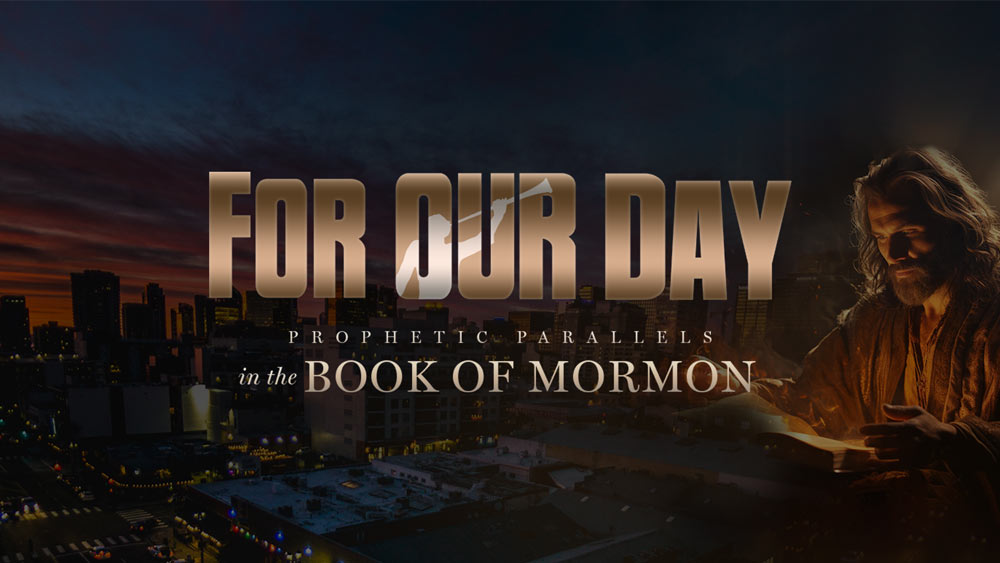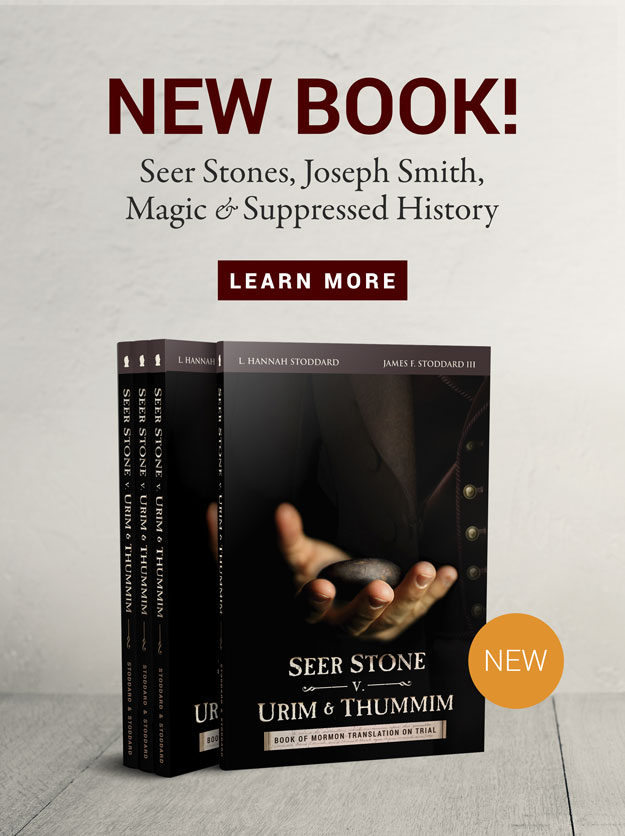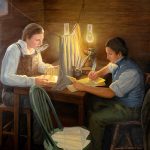Prophetic Statements
Brigham Young
The Scripture says that He, the Lord, came walking in the Temple, with His train; [Isaiah 6:1] I do not know who they were, unless His wives and children; but at any rate they filled the Temple, and how many there were who could not get into the Temple I cannot say. This is the account given by Isaiah, whether he told the truth or not I leave everybody to judge for himself. 1
George Q. Cannon
The Lord has hid the chosen seed in this way (among the poor and humble). There are in this audience descendants of the old Twelve Apostles, and–shall I say it? Yes, descendants of the Son of God Himself. He has seed among us; the Apostles and the Prophets have; and their seed will be known after a while, for the Lord will reveal their genealogy. 2
Heber C. Kimball
Are you ever going to be prepared to see God, Jesus Christ, His angels, or comprehend His servants, unless you take a faithful and prayerful course? Did you actually know Joseph Smith? No. Do you know brother Brigham? No. Do you know brother Heber? No, you do not. Do you know the Twelve? You do not, if you did, you would begin to know God, and learn that those men who are chosen to direct and counsel you are near kindred to God and to Jesus Christ, for the keys, power, and authority of the kingdom of God are in that lineage. I speak of these things with a view to arouse your feelings and your faithfulness towards God the Father, and His Son Jesus Christ, that you may pray and be humble, and penitent. 3
“Heber taught, as did a few other Mormons of his day, that Christ was married—indeed that Christ was married to both Mary and Martha and that the famous wedding of Cana was in reality Christ’s own wedding. In his own mind Heber was not only a follower of Christ, but a literal descendant. In his last public sermon, two months before his death, he said, “You do not know who Heber C. Kimball is, or you would do better.”If one can accept the possibility of Christ’s marriage, then such a descent is possible.” 4
Orson Hyde
“[Quoted John 2] Gentlemen, that is as plain as the translators, or different councils over this Scripture, dare allow it to go to the world, but the thing is there; it is told; Jesus was the bridegroom at the marriage of Cana of Galilee, and he told them what to do.
Now there was actually a marriage; and if Jesus was not the bridegroom on that occasion, please tell who was. If any man can show this, and prove that it was not the Savior of the world, then I will acknowledge I am in error. We say it was Jesus Christ who was married, to be brought into the relation whereby he could see his seed, before he was crucified. “Has he indeed passed by the nature of angels, and taken upon himself the seed of Abraham, to die without leaving a seed to bear his name on the earth?” No. But when the secret is fully out, the seed of the blessed shall be gathered in, in the last days; and he who has not the blood of Abraham flowing in his veins, who has not one particle of the Savior’s in him, I am afraid is a stereotyped Gentile, who will be left out and not be gathered in the last days; for I tell you it is the chosen of God, the seed of the blessed, that shall be gathered. I do not despise to be called a son of Abraham, if he had a dozen wives; or to be called a brother, a son, a child of the Savior, if he had Mary, and Martha, and several others, as wives; and though he did cast seven devils out of one of them, it is all the same to me.
Well, then, he shall see his seed, and who shall declare his generation, for he was cut off from the earth? I shall say here, that before the Savior died, he looked upon his own natural children, as we look upon ours; he saw his seed, and immediately afterwards he was cut off from the earth; but who shall declare his generation? They had no father to hold them in honorable remembrance; they passed into the shades of obscurity, never to be exposed to mortal eye as the seed of the blessed one. For no doubt had they been exposed to the eye of the world, those infants might have shared the same fate as the children in Jerusalem in the days of Herod, when all the children were ordered to be slain under such an age, with the hopes of slaying the infant Savior. They might have suffered by the hand of the assassin, as the sons of many kings have done who were heirs apparent to the thrones of their fathers.
History is replete with circumstances of neck-or-nothing politicians dyeing their hands in the blood of those who stood in their way to the throne or to power.
That seed has had its influence upon the chosen of God in the last days. The same spirit inspires them that inspires their father, who bled and died upon the cross after the manner of the flesh. 5
I discover that some of the Eastern papers represent me as a great blasphemer, because I said, in my lecture on Marriage, at our last Conference, that Jesus Christ was married at Cana of Galilee, that Mary, Martha, and others were his wives, and that he begat children. All that I have to say in reply to that charge is this—they worship a Savior that is too pure and holy to fulfil the commands of his Father. I worship one that is just pure and holy enough “to fulfil all righteousness;” not only the righteous law of baptism, but the still more righteous and important law “to multiply and replenish the earth.” Startle not at this! For even the Father himself honored that law by coming down to Mary, without a natural body, and begetting a son; and if Jesus begat children, he only “did that which he had seen his Father do.” 6
It will be borne in mind that once on a time, there was a marriage in Cana of Galilee; and on a careful reading of that transaction, it will be discovered that no less a person than Jesus Christ was married on that occasion. If he was never married, his intimacy with Mary and Martha, and the other Mary also whom Jesus loved, must have been highly unbecoming and improper to say the best of it.
I will venture to say that if Jesus Christ were now to pass through the most pious countries in Christendom with a train of women, such as used to follow him, fondling about him, combing his hair, anointing him with precious ointment, washing his feet with tears, and wiping them with the hair of their heads and unmarried, or even married, he would be mobbed, tarred, and feathered, and rode, not on an ass, but on a rail. What did the old Prophet mean when he said (speaking of Christ), “He shall see his seed, prolong his days, &c.” Did Jesus consider it necessary to fulfil every righteous command or requirement of his Father? He most certainly did. This be witnessed by submitting to baptism under the hands of John. “Thus it becometh us to fulfil all righteousness,” said he. Was it God’s commandment to man, in the beginning, to multiply and replenish the earth? None can deny this, neither that it was a righteous command; for upon an obedience to this, depended the perpetuity of our race. Did Christ come to destroy the law or the Prophets, or to fulfil them? He came to fulfil. Did he multiply, and did he see his seed? Did he honor his Father’s law by complying with it, or did he not? Others may do as they like, but I will not charge our Savior with neglect or transgression in this or any other duty.
At this doctrine the longfaced hypocrite and the sanctimonious bigot will probably cry, blasphemy! Horrid perversion of God’s word! Wicked wretch! He is not fit to live! &c., &c. But the wise and reflecting will consider, read, and pray. If God be not our Father, grandfather, or great grandfather, or some kind of a father in reality, in deed and in truth, why are we taught to say, “Our Father who art in heaven?” How much soever of holy horror this doctrine may excite in persons not impregnated with the blood of Christ, and whose minds are consequently dark and benighted, it may excite still more when they are told that if none of the natural blood of Christ flows in their veins, they are not the chosen or elect of God. Object not, therefore too strongly against the marriage of Christ, but remember that in the last days, secret and hidden things must come to light, and that your life also (which is the blood) is hid with Christ in God. 7
Wilford Woodruff
“Sunday I Attended the Sabbath School Conference …. Joseph F. Smith spoke one hour & 25 minutes. He spoke upon the Marriage in Cana at Galilee. He taught Jesus was the Bridgegroom and Mary & Martha the brides. He also refered to Luke 10 ch. 38 to 42 verse, Also John 11 ch. 2 & 5 vers John 12 Ch 3d vers, John 20 8 to 18. Joseph Smith spoke upon these passages to show that Mary & Martha manifested much Closer relationship than merely a believer which looks consister. He did not think that Jesus who decended through Poligamous families from Abraham down & who fulfilled all the Law even baptism by immersion would have lived and died without being married.” 8
Orson Pratt, The Seer
Jedediah M. Grant
What does old Celsus say, who was a physician in the first century, whose medical works are esteemed very highly at the present time. His works on theology were burned with fire by the Catholics, they were so shocked at what they called their impiety. Celsus was a heathen philosopher; and what does he say upon the subject of Christ and his Apostles, and their belief? He says, “The grand reason why the Gentiles and philosophers of his school persecuted Jesus Christ, was, because he had so many wives; there were Elizabeth, and Mary, and a host of others that followed him.” After Jesus went from the stage of action, the Apostles followed the example of their master. For instance, John the beloved disciple, writes in his second Epistle, “Unto the elect lady and her children, whom I love in the truth.” Again, he says, “Having many things to write unto you (or communicate), I would not write with paper and ink: but I trust to come unto you, and speak face to face, that our joy may be full.” Again—“The children of thy elect sister greet thee.” This ancient philosopher says they were both John’s wives. Paul says, “Mine answer to them that do examine me is this … Have we not power to lead about a sister, a wife, as well as other apostles, and as the brethren of the Lord, and Cephas.” He, according to Celsus, had a numerous train of wives. The grand reason of the burst of public sentiment in anathemas upon Christ and his disciples, causing his crucifixion, was evidently based upon polygamy, according to the testimony of the philosophers who rose in that age. A belief in the doctrine of a plurality of wives caused the persecution of Jesus and his followers. We might almost think they were “Mormons.” 9
Scripture
D&C 113:1-6
Who is the Stem of Jesse spoken of in the 1st, 2d, 3d, 4th, and 5th verses of the 11th chapter of Isaiah?
Verily thus saith the Lord: It is Christ.
What is the rod spoken of in the first verse of the 11th chapter of Isaiah, that should come of the Stem of Jesse?
Behold, thus saith the Lord: It is a servant in the hands of Christ, who is partly a descendant of Jesse as well as of Ephraim, or of the house of Joseph, on whom there is laid much power.
What is the root of Jesse spoken of in the 10th verse of the 11th chapter?
Behold, thus saith the Lord, it is a descendant of Jesse, as well as of Joseph, unto whom rightly belongs the priesthood, and the keys of the kingdom, for an ensign, and for the gathering of my people in the last days.
- Brigham Young, “Gathering the Poor—Religion a Science“, Journal of Discourses, vol. 13, pp. 300-309, November 13, 1870.
- President George Q. Cannon, Solemn Assembly in SLC Temple, 2 July 1899, Meeting Notes, Utah State Historical Society, p. 376
- Heber C. Kimball, “Obedience Produces Confidence, Etc.“, Journal of Discourses, vol. 4, pp. 247-252, March 1, 1857.
- Biography of Apostle Heber C. Kimball, p. 275
- Orson Hyde, “The Marriage Relations”, Journal of Discourses, vol. 2, pp. 75-87, October 6th, 1854.
- Orson Hyde, “The Judgments of God on the United States—The Saints and the World”, Journal of Discourses, vol. 2, pp. 202-211, March 18th, 1855.
- Orson Hyde, “Man the Head of Woman, Etc.“, Journal of Discourses, vol. 4, pp. 257-263, .
- The Prophet Wilford Woodruff wrote in his journal on July 22, 1883
- Jedediah M. Grant, “Uniformity“, Journal of Discourses, vol. 1, pp. 341-349, August 7, 1853.







